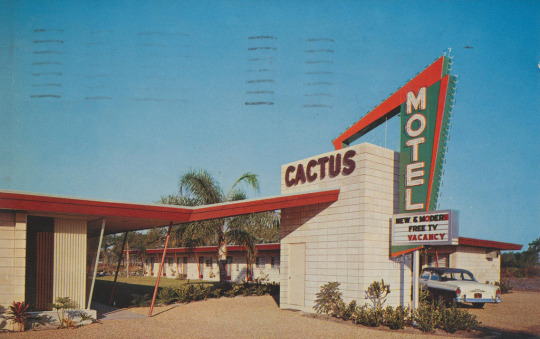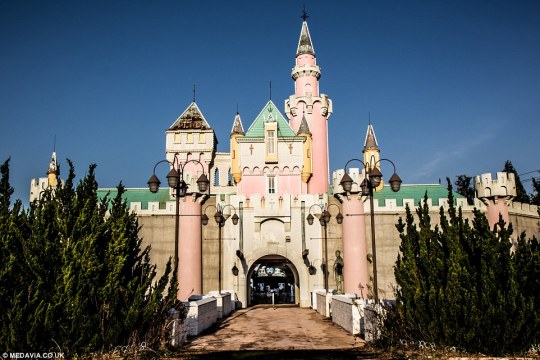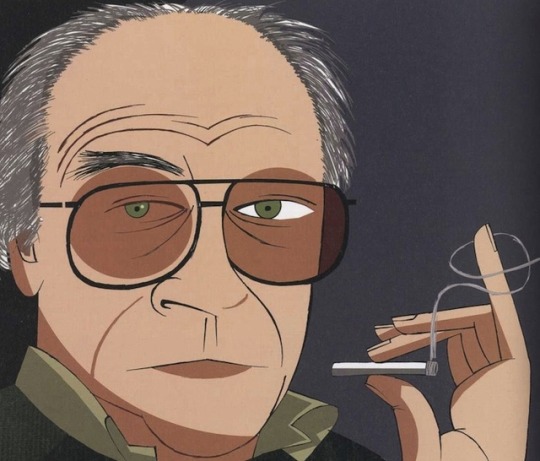Text
“The Florida Project” Review

Tourists.
Pastel stucco walls.
A dead fish in a motel pool.
Chairs with the neoprene slats, sun-faded to the same shade of white
Discount Gift Outlets.
Pond scum.
A Waffle House parking lot in the midday heat.
Does this sound like paradise to you?
You’re not a kid. Probably. Unless you are, in which case, what are you doing on here? Seriously. Go outside, run and jump and play, use your little arms and legs to cause trouble and climb things and run away from taller, more awkward and less nimble grown-ups. Go and make the most of a patch of dirt, or a shitty old playground, or whatever other possibly dangerous and definitely irresponsible thing I can think of. Because when you’re a kid, anything can be paradise. Even things that aren’t.

This is the main thrust of Sean Baker’s “The Florida Project”. It takes place next to a literal fantasyland- Walt Disney World- but tells the story of the places just outside: the motels and the Waffle Houses and the open fields that surround the Happiest Place on Earth. It’s about a six-year-old girl named Moonie, and her mom, and her friends, and the manager of the motel they all live in. It’s beautiful. The cinematography makes the world feel small in the way that only memories of being a kid feel like. Sitting against a wall in the blazing sun, waiting for someone to come out and play? Been there. The excitement of an impromptu sleepover, huddled on the floor with pizza? Felt that.
Of course, one of the film’s strengths is its portrayal of the lives we haven’t lived and places we’ve never been- the people of the aforementioned pastel motels and Discount Gifts; the world of pond scum and neoprene. Disney World is hardly even mentioned, the characters only interacting with the runoff from the park, backstroking through the periphery.The film lives and breathes sensory details. It’s the tan-line on the back of Willem Dafoe’s leathery neck. It’s the way Moonie holds her tongue as she cries. It’s the sounds of a parking lot fight, the music on the radio, the way the conversations amongst the kids bubble and burst. It’s all so achingly real, even the parts that feel like childhood fantasia. It feels like such a convincing piece of reality that you forget it has a beginning and end; that this is supposed to be a movie, with a plot and a climax. When the film does pull its sparse plot threads into a taut narrative tapestry near the end, it’s all the more stunning because it never felt like plot at all. It just seemed like life.
I credit that to the acting as much as the writing. The shining star is Brooklynn Prince, who plays the riot-pixie-lead Moonie. Moonie is a bad bitch, and she’ll tell you as much. She’ll spit in your face and call you a ratchet skank, then turn around and give you a lick of her ice cream cone. Seriously, her first line is calling someone a ratchet skank. All the kids, really, are spot-on. Moonie and her band of merry pranksters dance and sing, zig and zag, and of course talk and talk and talk, just like real six-year-olds would. Moonie’s mom, Halley, played by Bria Vinaite, is wonderfully broken, trying to live carefree and make ends meet, raising a child while still a child herself. And Willem Dafoe, as the motel manager Bobby, will break your heart. The kind, paternal, patient Dafoe is not a Dafoe I knew could exist, but it does and it’s fantastic, and it makes his moments of physicality all the more impactful. Don’t be surprised if you suddenly develop a deep, awe-inspiring love for Daddy Dafoe. I know I did. If you’re looking for comparisons, there’s not many. If you liked “Beasts of the Southern Wild”, you’ll love this. “Beasts” vein of magical realism skews quite a bit more toward the magical than “The Florida Project” does, but the sense of childhood wonder is impressively tangible in both. And of course, the wild-child leading ladies of both films will blow your mind. I also was reminded of “Paris, Texas” at times. That film’s pastoral poetry may be substituted here for gas station jive, and the camera may caress marshland motels outside Disney rather than desert motels on the edge of lone highways, but the subject matter is the same: broken parents, trying to make sense of their role as parents, and make their children happy and safe.
Forgive me for being a college-educated prick, but the philosopher Jean Baudrillard wrote about Disneyland once. Disneyland got him all pissed off, you see. He didn’t like that it was seemingly replicating real places, because for the vast majority of people who visited, these replications were the reality. They were never going to see anything like the Cinderella Castle for the rest of their lives. The term he made for this was hyperreality- the inability for people to distinguish between reality and a simulation of it. All castles are replaced by the Disney Castle. Fantasy becomes reality.

Of course, that’s not the way things go. In the film, all the characters are living a fantasy in one way or another, and, try as they might, they can’t stop real life from crashing back in. It seems that the problem isn’t the imagined becoming real life. It’s real life stomping out any imagination you have left. Most of the time, fantasies exist to keep a harsh reality at bay. One where your home sucks, and people hurt you, and you can’t even get out of your own town, much less your country, to go see some real-life Fairytale Castle. A reality where things cost money, and actions have consequences, and you can’t just go out and run through the fields all day with your friends forever. If you can’t escape those harsh truths, then is it better to just make believe? Or do you face the music? That’s the question “The Florida Project” asks, over and over.
Just watch the movie. Seriously.
0 notes